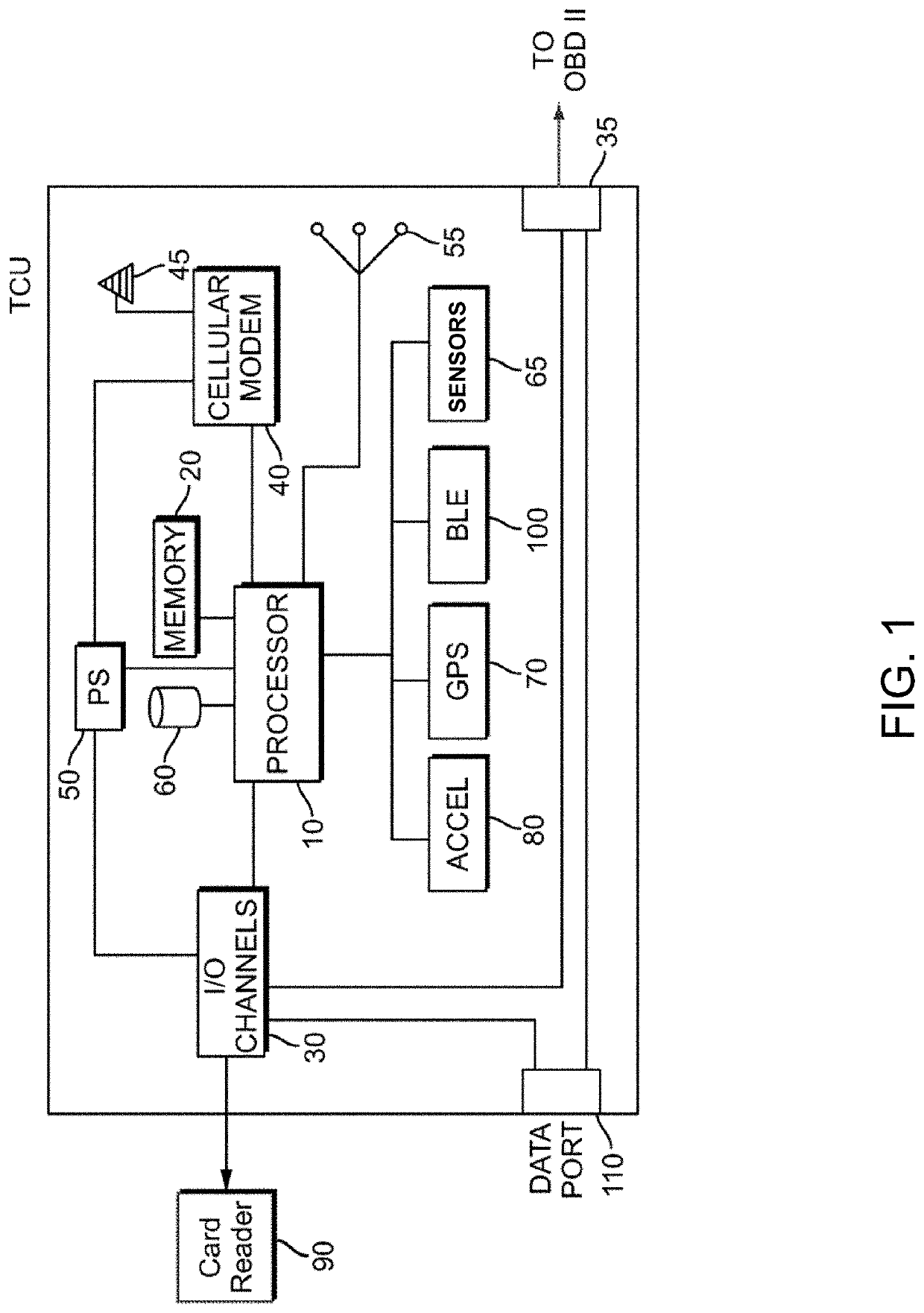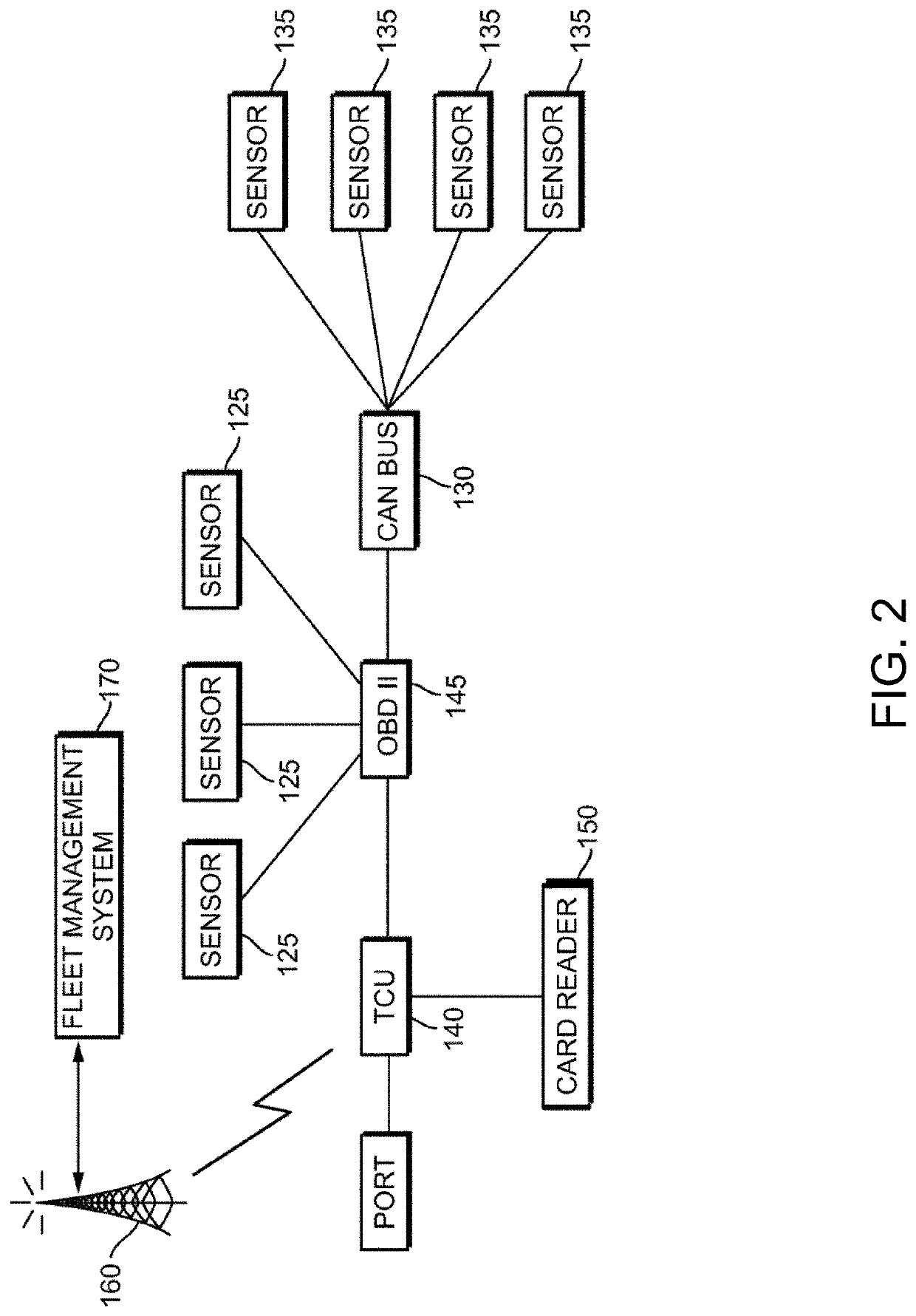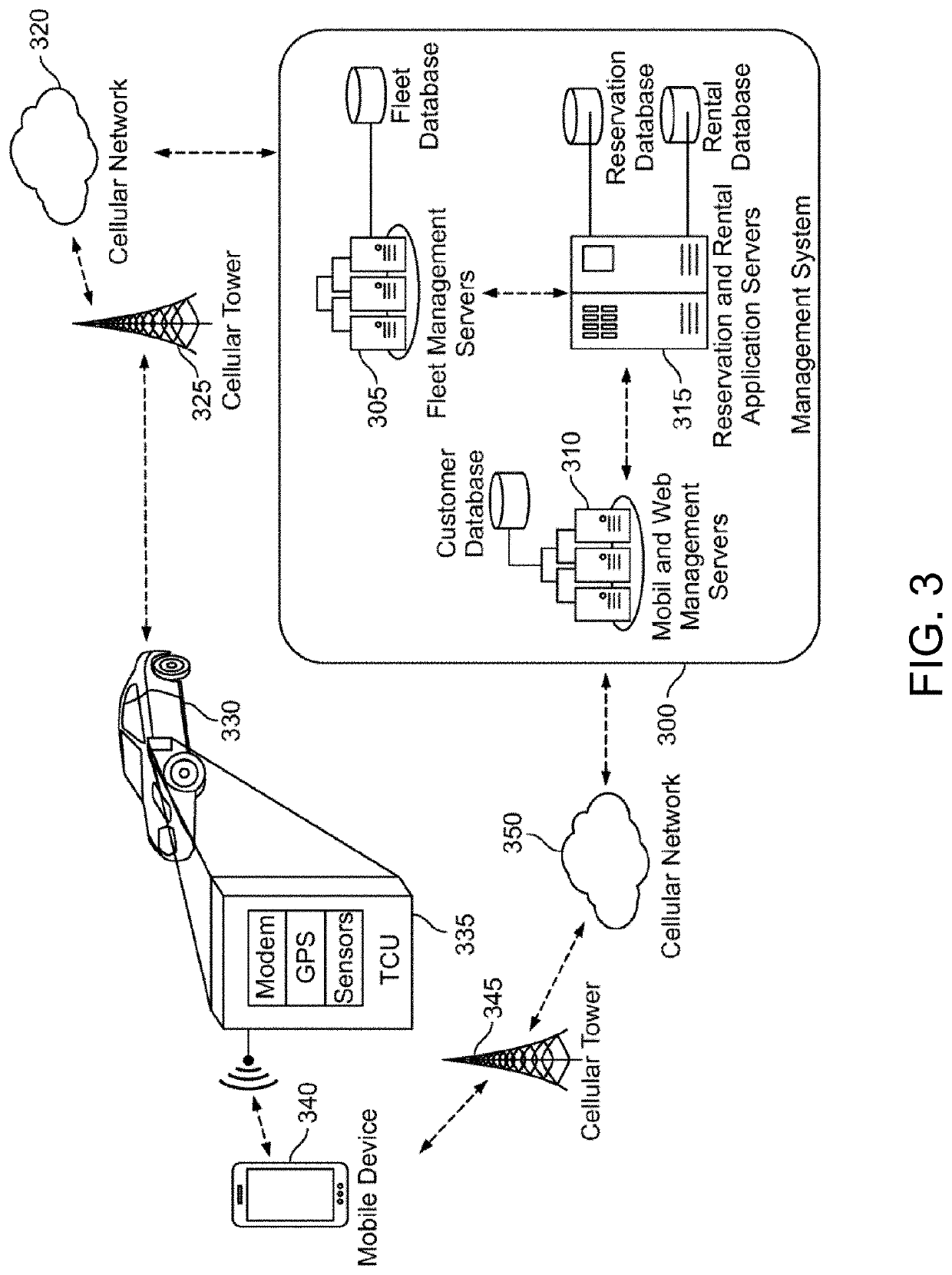Distributed maintenance system and methods for connected fleet
a technology of maintenance system and connected fleet, applied in the field of distributed maintenance system, can solve the problems of increasing expense, adversely affecting fleet use and revenues, and unable to have these advantages of vehicles in a distributed fleet, so as to facilitate and quickly handle the identification and address of servicing and maintenance problems or problems
- Summary
- Abstract
- Description
- Claims
- Application Information
AI Technical Summary
Benefits of technology
Problems solved by technology
Method used
Image
Examples
Embodiment Construction
[0019]In various exemplary embodiments, the present invention comprises a system and related methods for management, planning and control of a connected fleet of vehicles. A “connected fleet” comprises a plurality of vehicles, some or all equipped with (i) on-board sensors and computer systems for monitoring and capturing the operational status and performance of vehicle systems and components, and (ii) one or more electronic control and / or communications units for two-way or multiple pathway communication with one or more fleet management servers or networks, outside data centers or sources, other vehicles, and individual user or driver computing devices. A “connected user” comprises a user with one or more computing devices, including, but not limited to, mobile computing devices such as smart phones, tablets, or wearable devices, that provide extended, continuous, uninterrupted electronic communications with various computer networks, devices, and systems, including, but not limi...
PUM
 Login to View More
Login to View More Abstract
Description
Claims
Application Information
 Login to View More
Login to View More - R&D
- Intellectual Property
- Life Sciences
- Materials
- Tech Scout
- Unparalleled Data Quality
- Higher Quality Content
- 60% Fewer Hallucinations
Browse by: Latest US Patents, China's latest patents, Technical Efficacy Thesaurus, Application Domain, Technology Topic, Popular Technical Reports.
© 2025 PatSnap. All rights reserved.Legal|Privacy policy|Modern Slavery Act Transparency Statement|Sitemap|About US| Contact US: help@patsnap.com



